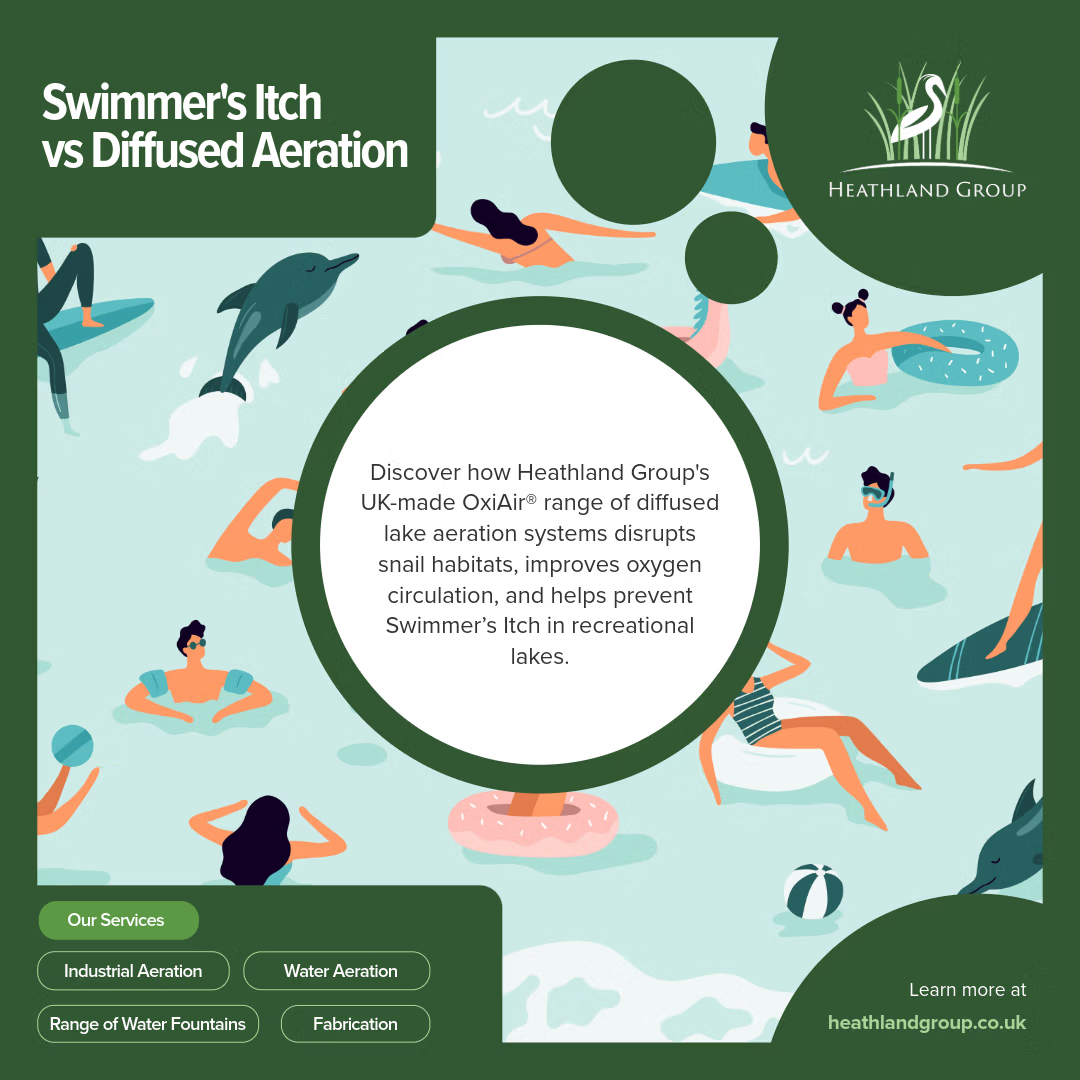Free consultation
Call us on: 0333 0384 103


Diffused (subsurface) aeration, while not widely adopted yet for swimmer's itch prevention, offers a promising ecosystem-level intervention by improving water circulation and reducing snail habitat, which helps lower parasite risk in recreational lakes.
Discover how Heathland Group's UK‑made OxiAir® range of diffused lake aeration systems disrupts snail habitats, improves oxygen circulation, and helps prevent Swimmer’s Itch in recreational lakes.
It's important to mention that due to health and safety risks, diffused water aeration should be used in recreational or sports lakes so that it doesn't interfere with the visitors. Surface water aeration systems are therefore not suitable as they float on top of the water surface.
Swimmer’s itch, also known as cercarial dermatitis, is an itchy rash caused by microscopic schistosome larvae released from aquatic snails into fresh or brackish water. These parasites originally infect birds (ducks, geese, swans) or mammals, but sometimes burrow into human skin, triggering an allergic reaction, leading to red bumps, blisters, and severe itching within hours to a couple of days after exposure.
The lifecycle goes like this: infected wildlife excrete parasite eggs into water → eggs hatch into miracidia → miracidia infect specific snails → snails release cercariae into shallow water where swimmers may encounter them.
Risk is highest in shallow, warm, poorly circulated water, especially in the morning or under onshore winds. Personal protective actions - like swimming in deeper water, towelling off immediately, and avoiding bird feeding - are the first line of defence.
Community-level interventions - like removing snails, applying copper sulphate, or controlling birds have generally proven ineffective, costly, or harmful to the ecosystem; most organisations now emphasise prevention over eradication.
Diffused (subsurface) bubble aeration systems introduce air at the bottom of the lake using permeable diffusers, releasing fine bubbles that rise and circulate the water column. This process:
Whilte not a direct treatment, aeration can indirectly reduce environmental conditions that favour snail hosts and parasite persistence
This kind of environmental management is consistent with strategies that target host habitats rather than relying on chemical or invasive interventions.
Your OxiAir systems circulate water from bottom to surface, breaking up stagnant littoral zones where aquatic snails thrive and release cercariae. This discourages snail habitation and helps reduce parasite density near shorelines.
Both OxiAir Shallow® and OxiAir HD® systems dramatically increase dissolved oxygen, mixing water columns and preventing thermal stratification - factors that reduce snail-friendly environments.

Heathland Group’s OxiAir HD® diffused lake aerator is designed and developed with depth in mind. These diffused lake aerators can aerate your lake in depths up to 20m.

The OxiAir Shallow® diffused lake aerator, designed and manufactured in the UK by Heathland Group, uses a super silent compressor that pumps air up to the surface through diffuser membranes situated on the lake bed. Ideal for locations with little to no access to power supply.

The OxiAir Shallow® diffused lake aerator, designed and manufactured in the UK by Heathland Group, uses a super silent compressor that pumps air up to the surface through diffuser membranes situated on the lake bed. Ideal for locations with little to no access to power supply.
For lake managers or sports facilities:
Contact us for a free, no-obligation quote on our diffused water aeration systems.